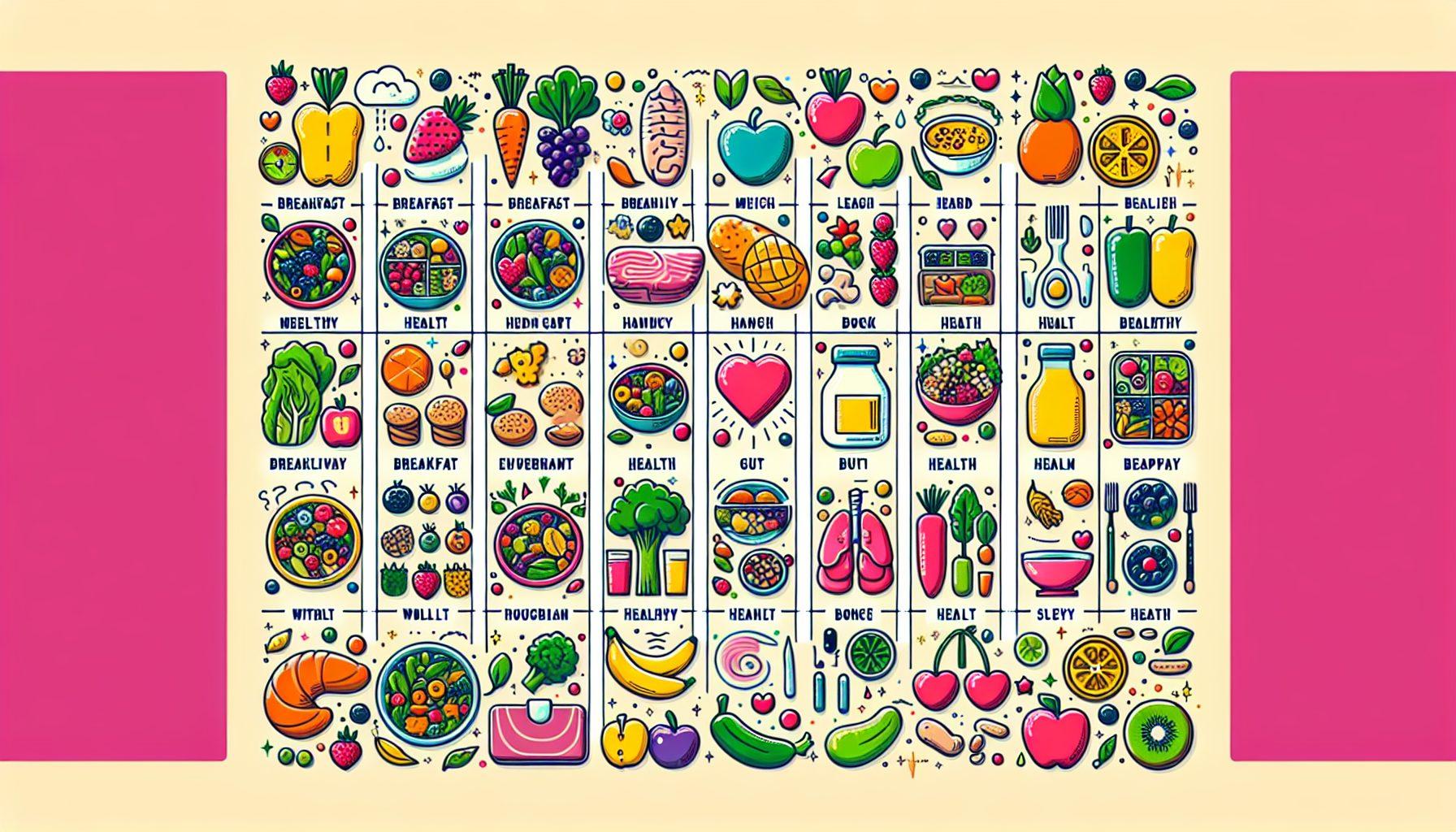Creating a Healthy Meal Plan is an essential aspect of maintaining a balanced and nutritious diet. By planning your meals in advance, you can ensure that you’re fueling your body with the necessary nutrients it needs to function optimally. Whether your goal is to lose weight, improve your overall health, or simply adopt healthier eating habits, a well-designed meal plan can be a valuable tool in achieving your goals.
The Importance of a Healthy Meal Plan
A healthy meal plan offers numerous benefits, including:
- Promoting Weight Loss: Planning your meals in advance can help you make healthier food choices and control portion sizes, thus supporting weight loss efforts.
- Providing Balanced Nutrition: A well-designed meal plan ensures that you’re getting a wide range of essential nutrients, including carbohydrates, proteins, fats, vitamins, and minerals.
- Saving Time and Money: When you have a meal plan, you can minimize food waste, make more efficient grocery shopping trips, and save money by avoiding unnecessary purchases.
- Reducing Stress: Knowing what to cook and eat ahead of time can reduce decision fatigue and alleviate the stress associated with mealtime.
- Promoting Healthy Eating Habits: Following a meal plan encourages you to make healthier choices consistently and can help develop sustainable habits.
Steps to Create a Healthy Meal Plan
Follow these steps to create a personalized and effective healthy meal plan:
- Evaluate your dietary needs: Consider your age, gender, weight, height, activity level, and any specific dietary requirements or restrictions you may have, such as allergies or medical conditions.
- Set realistic goals: Determine your goals, whether it’s weight loss, muscle gain, or general health improvement. Set realistic and achievable targets that align with your long-term objectives.
- Plan your meals: Start by deciding how many meals you’ll have per day (e.g., breakfast, lunch, dinner, and snacks). Use online resources or consult with a registered dietitian to ensure your meal plans meet your nutritional needs.
- Create a grocery list: Once you’ve planned your meals, make a comprehensive grocery list based on the ingredients you’ll need. Stick to the list while shopping to avoid impulse purchases.
- Batch cooking and meal prep: Consider batch cooking certain ingredients or dishes in advance to save time during the week. Prepping ingredients ahead of time can also promote healthier choices when time is limited.
- Include a variety of foods: Aim to incorporate a wide range of fruits, vegetables, whole grains, lean proteins, and healthy fats into your meal plan. Variety ensures you’re getting different nutrients and prevents boredom.
- Balance macronutrients: Ensure each meal contains a balance of carbohydrates, proteins, and fats. This balance helps provide sustained energy, supports muscle growth and repair, and promotes overall satiety.
- Stay hydrated: Don’t forget to include water as an essential part of your meal plan. Proper hydration is crucial for overall health and wellbeing.
- Allow for flexibility: While it’s essential to stick to your meal plan, allow some flexibility to accommodate social occasions or unexpected events. Embrace the 80/20 rule, where 80% of your meals follow the plan, and 20% allow for flexibility and indulgence.
Remember, creating a healthy meal plan should be tailored to your specific needs and preferences. Consulting with a registered dietitian or nutritionist can provide personalized guidance, especially if you have specific health concerns or dietary restrictions.
If you need additional support in creating a healthy meal plan, consider seeking professional guidance from Eastside Ideal Health’s nutrition coaching services. Their experienced team can provide expert advice and personalized strategies to help you achieve your nutritional goals.
By adopting a well-designed meal plan and making healthier food choices, you can take control of your nutrition and pave the way for a healthier lifestyle. Start planning your meals today and experience the positive impact it can have on your overall well-being.

